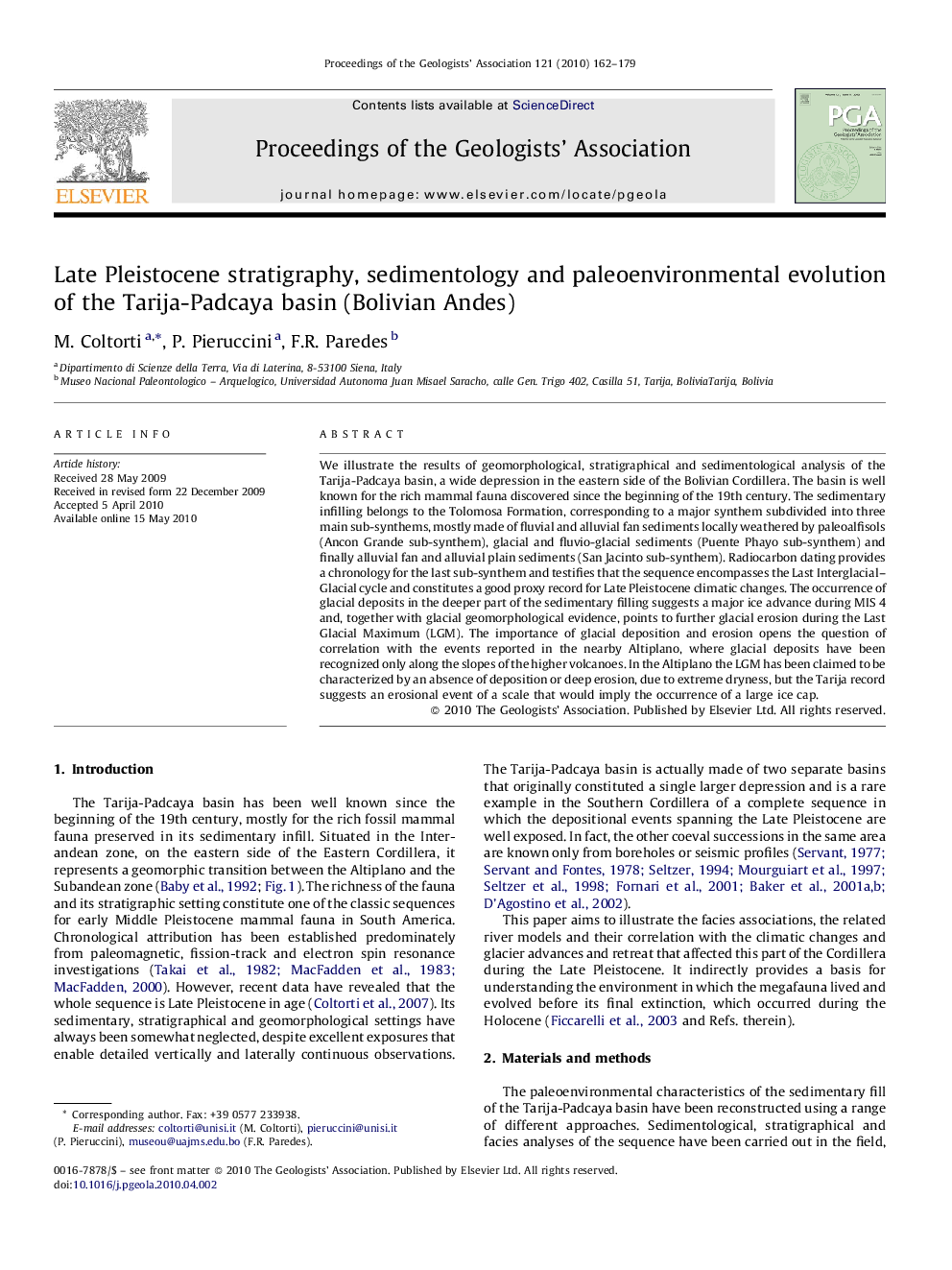| کد مقاله | کد نشریه | سال انتشار | مقاله انگلیسی | نسخه تمام متن |
|---|---|---|---|---|
| 4735181 | 1640673 | 2010 | 18 صفحه PDF | دانلود رایگان |

We illustrate the results of geomorphological, stratigraphical and sedimentological analysis of the Tarija-Padcaya basin, a wide depression in the eastern side of the Bolivian Cordillera. The basin is well known for the rich mammal fauna discovered since the beginning of the 19th century. The sedimentary infilling belongs to the Tolomosa Formation, corresponding to a major synthem subdivided into three main sub-synthems, mostly made of fluvial and alluvial fan sediments locally weathered by paleoalfisols (Ancon Grande sub-synthem), glacial and fluvio-glacial sediments (Puente Phayo sub-synthem) and finally alluvial fan and alluvial plain sediments (San Jacinto sub-synthem). Radiocarbon dating provides a chronology for the last sub-synthem and testifies that the sequence encompasses the Last Interglacial–Glacial cycle and constitutes a good proxy record for Late Pleistocene climatic changes. The occurrence of glacial deposits in the deeper part of the sedimentary filling suggests a major ice advance during MIS 4 and, together with glacial geomorphological evidence, points to further glacial erosion during the Last Glacial Maximum (LGM). The importance of glacial deposition and erosion opens the question of correlation with the events reported in the nearby Altiplano, where glacial deposits have been recognized only along the slopes of the higher volcanoes. In the Altiplano the LGM has been claimed to be characterized by an absence of deposition or deep erosion, due to extreme dryness, but the Tarija record suggests an erosional event of a scale that would imply the occurrence of a large ice cap.
Journal: Proceedings of the Geologists' Association - Volume 121, Issue 2, 2010, Pages 162–179